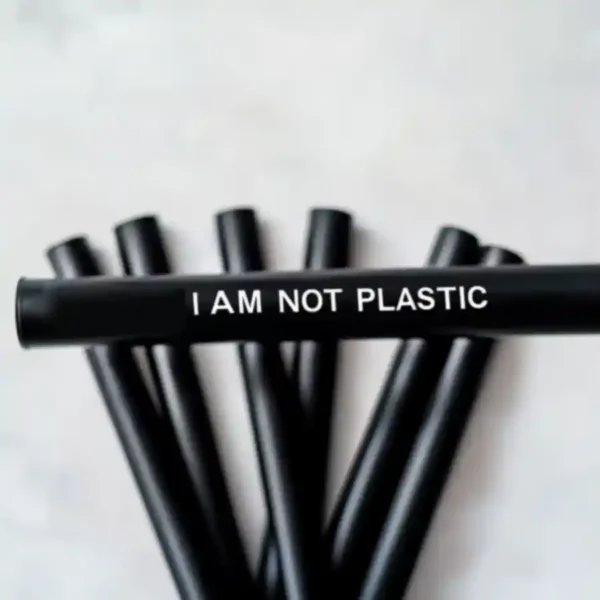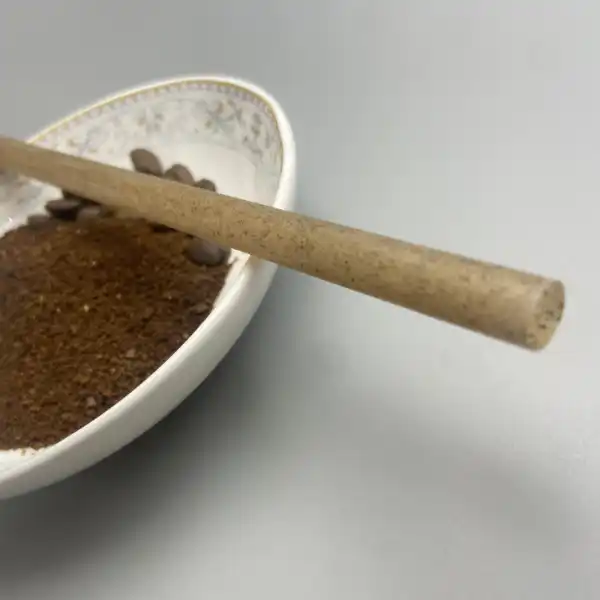ভূমিকা
The environmental crisis caused by plastic pollution has reached a critical point, with single-use plastics being a major contributor. Among these, plastic straws stand out as a symbol of our disposable culture, with Americans discarding a staggering 500 million of them daily. This volume contributes significantly to environmental degradation, as these straws often end up in landfills and oceans. The impact on marine life is particularly concerning, with numerous animals mistaking plastic debris for food. This article will explore the movement to ban plastic straws, examine the impacts of the bans, discuss sustainable alternatives, and propose how both individuals and businesses can adapt to this critical change. The primary focus will be on the efforts in the US and Europe, while also noting relevant global initiatives.

Why Ban Plastic Straws?
পরিবেশগত প্রভাব
The environmental toll exacted by plastic straws is immense. The sheer volume of straws used and discarded daily leads to significant pollution in landfills and oceans. Once discarded, these straws pose a grave threat to marine life, often being mistaken for food by marine animals. This tragic reality, vividly illustrated by videos of turtles with straws lodged in their noses, underscores the urgent need for change.
The Disposable Lifestyle
Plastic straws are symptomatic of a culture of convenience that has had adverse environmental consequences. The ease of use and disposal of these items has contributed to a widespread disregard for the environmental impact of single-use plastics. This highlights the necessity of rethinking our consumption habits and embracing more sustainable alternatives.

The Plastic Straw Ban: What It Is and Where It’s Happening
Definition of the Ban
The plastic straw ban refers to the prohibition or restriction imposed on the use, distribution, or sale of plastic straws, stirrers, and sticks. This measure is part of a broader effort to mitigate the environmental impact of single-use plastics, particularly their contribution to pollution in oceans and landfills.
Global Implementation
Plastic straw bans have been implemented in various locations globally, ranging from individual cities to entire countries. These include the United States, Canada, Australia, and Taiwan. In Europe, the European Union has taken comprehensive measures to restrict the use of single-use plastics.
US Bans
Several states in the U.S. have taken proactive measures to ban plastic straws. Notable trailblazers in this movement include California, Maine, New Jersey, New York, Oregon, Rhode Island, Vermont, and Washington. These states have implemented bans to curb the ecological damage caused by plastic straws. These bans often involve eliminating plastic straws entirely or providing them only upon request.
Europe and Asia
The European Union implemented a ban on the sale of single-use plastic plates, cutlery, straws, balloon sticks, cotton buds, cups, food and beverage containers made of expanded polystyrene, and all products made of oxo-degradable plastic on July 3, 2021. This marked a decisive move to curtail the environmental impact of these commonly used items. In Asia, Taiwan banned petroleum-based plastic straws in numerous public spaces in July 2019, aiming to eliminate 100 million plastic straws annually. The G20 summit in Osaka also saw world leaders acknowledge the severity of marine plastic waste and pledge to take concrete steps to address the crisis. Furthermore, Indonesia has outlined plans to introduce phased bans on single-use plastics with a target of complete plastic recycling by 2027.

The Importance of Signage
Signs about the plastic straw ban are often displayed in establishments where the ban is in effect. These signs communicate the policy to customers, informing them of the decision to eliminate plastic straws entirely or provide them only upon request.
Alternatives to Plastic Straws
Overview
Numerous viable and sustainable alternatives to plastic straws are available, providing effective and environmentally responsible options.
Types of Alternatives
- Compostable Sugarcane Straws: These straws are crafted from sugarcane fibers, a byproduct of sugar extraction and agricultural waste. They are entirely home compostable and can withstand temperatures up to 90°C.
- Coffee Grounds Straws: These are created by blending coffee grounds with biodegradable components. They repurpose coffee byproducts, reducing waste and carbon emissions.
- Corn Starch Straws: These are made from renewable resources like corn starch, water, and other biodegradable components. They decompose in controlled composting environments in under three months, and the decomposition process is non-toxic.
- Paper Straws: These plant-based straws are made from paper pulp. While some paper straws have chemical coatings like PFAS for waterproofing, untreated paper straws without coatings decompose easily and are suitable for beverages below 60°C.
- Glass Straws: These are a sophisticated and reusable alternative that enhances the drinking experience. They are often used in hotels, bars, restaurants, and stores, signaling a commitment to sustainability.
- Grass Straws: These are chemical-free and biodegradable, breaking down within 6 months, making them an excellent eco-friendly alternative.
Challenges and Considerations
Economic Impacts
The transition to alternative straws may present economic challenges for some businesses, particularly small businesses and restaurants. However, it also presents new economic opportunities for businesses developing and selling sustainable alternatives. The plastics manufacturing industry and related jobs may be affected by these bans.
Implementation and Enforcement Challenges
Monitoring compliance with plastic straw bans can be difficult, and there may be legal challenges and loopholes. Public resistance to these bans also poses a hurdle.
Lifecycle Assessment of Alternatives
The environmental impact of producing and transporting alternative straws must be considered. Additionally, the carbon footprint of various alternatives, the effectiveness of composting methods, and the potential for microplastic pollution are factors that need evaluation.

Social and Cultural Considerations
Different cultures have varying uses for straws, and it is important to consider accessibility for people with disabilities. These factors must be addressed to ensure that the plastic straw ban movement is inclusive and does not inadvertently create new barriers.
Expert Tips and Best Practices
For Consumers
- Embrace reusable straws, such as glass or metal.
- Choose compostable options like sugarcane, corn starch, or grass straws.
- Be mindful of temperature limitations for some straws, such as paper.
- Support businesses that have eliminated plastic straws.
- Advocate for policies that promote sustainability.
For Businesses
- Display clear signage to communicate policy changes to customers.
- Offer a variety of sustainable straw options.
- Educate staff on the reasons for the ban and proper use of alternatives.
- Offer incentives to customers who bring their own reusable straws.
- Transition gradually to reduce the financial impact.
- Use compostable or biodegradable options.
- Highlight the importance of proper composting or disposal of biodegradable straws.
A Deeper Dive into Consumer Behavior
Factors influencing consumer acceptance of alternatives, strategies for encouraging behavior change, and the role of marketing and education are critical to fostering a transition to sustainable consumption.
Global Impact and International Cooperation
Different countries are tackling the issue of plastic pollution in different ways. International agreements are vital in addressing global plastic pollution. It is important to recognize and address the unique challenges faced by developing countries.
Call to Action
The transition toward a plastic-free future requires collective action. By making informed choices and supporting eco-friendly initiatives, we can reduce our reliance on single-use plastics. A plastic-free future is an achievable reality. Consumers can reduce their plastic footprint by embracing sustainable alternatives. These actions contribute to reducing harm to marine life and improving environmental conditions.
Frequently Asked Questions (FAQ)
- Why are plastic straws so bad for the environment?
- They contribute to pollution in landfills and oceans and pose a threat to marine life.
- What exactly does a plastic straw ban mean?
- It refers to the prohibition or restriction on the use, distribution, or sale of plastic straws, stirrers, and sticks.
- Which states in the US have banned plastic straws?
- California, Maine, New Jersey, New York, Oregon, Rhode Island, Vermont, and Washington.
- What alternatives to plastic straws are available?
- Sugarcane, coffee grounds, corn starch, paper, glass, and grass straws are some of the sustainable alternatives.
- Are paper straws truly eco-friendly?
- While plant-based, some paper straws use chemical coatings; those without are better for the environment. They may also soften with liquids.
- Can I compost all biodegradable straws?
- Some, like sugarcane straws, are home compostable, while others may need specific composting conditions.
- How can I, as a consumer, support the plastic straw ban movement?
- By choosing reusable straws, supporting sustainable businesses, and advocating for policy changes.
- What are some ways businesses can reduce the cost of switching to plastic straw alternatives?
- By transitioning gradually and by offering incentives to customers who bring their own straws.







